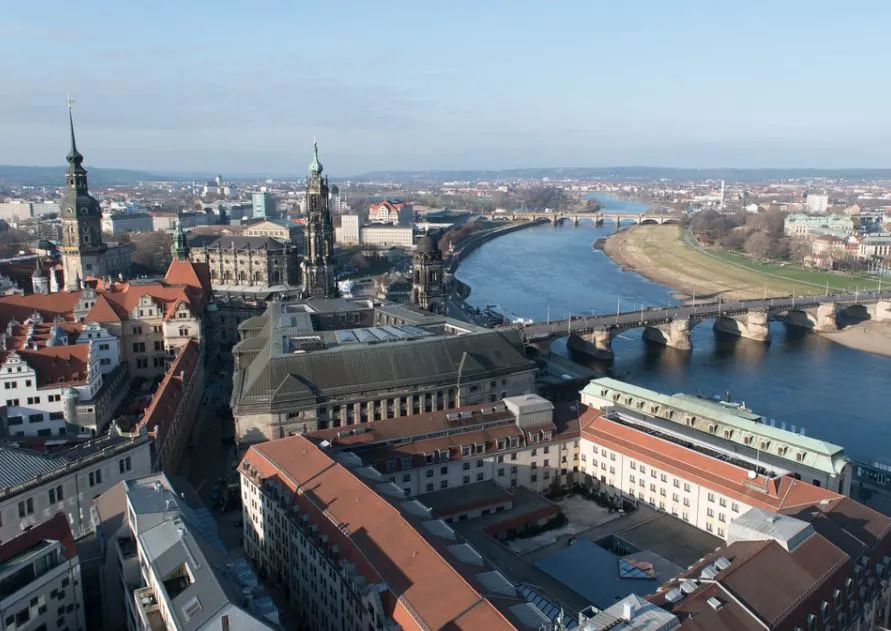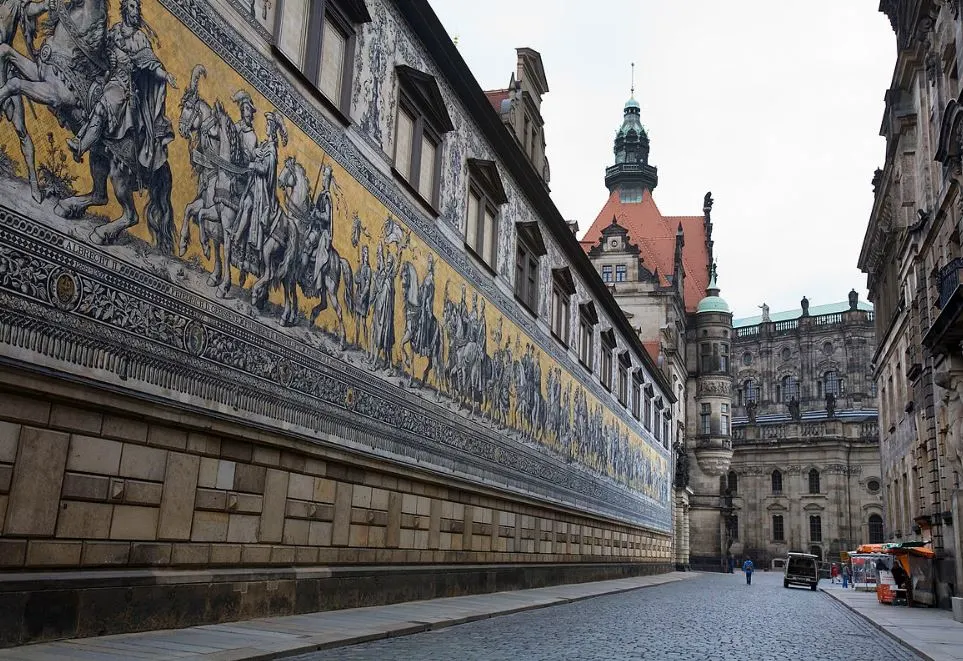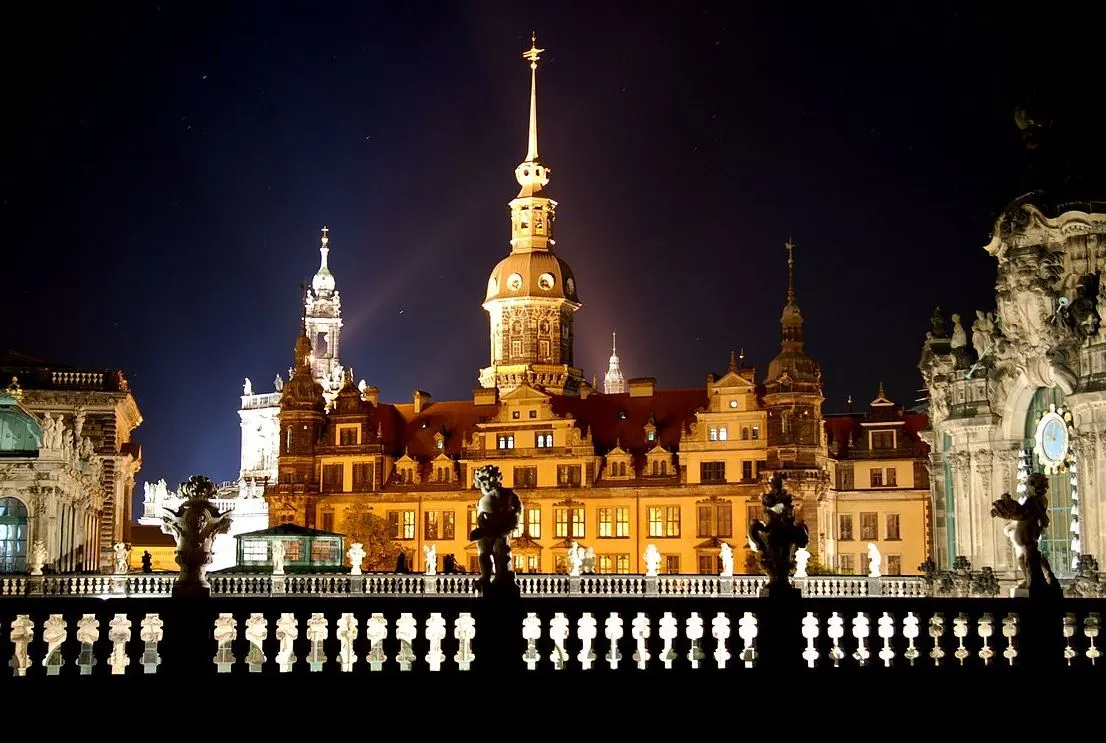The capital city of the state of the Free State of Saxony in the eastern part of Germany is home to some amazing feats of architecture.
What’s remarkable is that Dresden isn’t a very old city, at least not compared to some other major cities in Germany and other parts of Europe.
It was nothing more than a village of West Slavic forest dwellers during the Middle ages. The city only grew in importance when it became the seat of the dukes of Saxony in the late 15th century.
In this article, you’ll discover some of the most interesting facts about Dresden Castle, a castle in Europe around which the modern-day city was established.
1. It’s located near the Elbe River in the historic heart of the city
The city of Dresden grew from a small West Slavic village called Drežďany, which means “forest people,” into a major metropolitan area of over 1.34 million inhabitants.
The most important building in the city’s history is Dresden Castle, a structure that dominates Dresden’s Old Town district.
The castle is surrounded by many other famous landmarks in the city, including the Zwinger Palace and Semperoper to the west, Dresden Cathedral to the north, and the Palace of Culture to the southeast.
The utmost western tip of the castle borders Theaterplatz, the beautiful square on the banks of the nearby Elbe River.

2. The first building in the location dates back to the early 13th century
The city grew from this small Slavic village on the southern bank of the Elbe River into the large metropolitan area it has become today.

The first major structure in Dresden was constructed on the location of the castle and was a Romanesque building that served as the town’s main fortification.
The strategic location near the river was certainly the main reason why this building was constructed as it was connected to this important waterway.
It’s estimated that this building was completed around 1200 and the city gradually grew around it.

3. The oldest part of the castle is its most prominent feature
The Romanesque keep constructed during the Middle Ages was expanded several times and a watchtower was built in the early 15th century.
This tower is known as the Hausmannsturm or “Haussman Tower” and is the oldest surviving part of the modern-day Dresden Castle.
This tower stands 100.27 meters (328.96 feet) tall and features an observation deck that allows you to get amazing views of the city and its surroundings. You do have to climb 222 steps to reach it.
The weathervane on top of the copper lantern is pretty impressive and adds about 6 meters (19.68 feet) to the structure’s height

4. Dresden Castle got its current layout in the late 15th and 16th centuries
The building was only defined as a castle in the 14th century and it took a while before the first major expansion phase was completed.
A project conducted between 1468 and 1480 transformed the rather simple castle into a fortified structure with an enclosed courtyard.

This is pretty much the layout that the main building still has today. A number of Renaissance buildings were constructed in the 16th century to further expand the fortification.
The castle served as the main residence of the Saxon Electors (1547–1806), the Saxon kings (1806–1918), and the Kings of Poland (1697–1763). This period covered over 4 centuries!

5. The building got its current Baroque appearance during the early 18th century
Unfortunately, not many of the original buildings still stand today. A devastating fire destroyed much of the castle complex in the year 1701.
Augustus II (1670-1633), a man who became the Elector of Saxony, the King of Poland, and the Grand Duke of Lithuania, rebuilt the complex in the Baroque architectural style.
He was also the man who commissioned the construction of the nearby Zwinger Palace, one of the finest examples of Baroque architecture in Germany.

6. The final expansion incorporated another architectural style in the early 1900s
The members of the House of Wettin were the main rulers in this part of Germany and they celebrated their 800th anniversary in the late 19th century.
To commemorate this event, they commissioned an expansion of Dresden Castle which was conducted in the Renaissance Revival style that was popular at the time.
The most notable addition to this project was the Stallhof or “Stable Courtyard,” a complex that connects the castle to the nearby Johanneum.

This was originally decorated with a fresco titled “Procession of Princes” or “Fürstenzug,” a monumental work of art with a length of 102 meters (334.64 feet).
This depicts the history of the House of Wettin. Because it was quickly fading, it was moved to porcelain tiles that were attached to the exterior of the Stallhof, the northern border of the castle complex.

7. It has been completely rebuilt following the devastation during World War II
The Bombing of Dresden in World War II between February 13 and 15, 1945, destroyed approximately 6.6 square kilometers (1,600 acres) of the city center.
This unfortunately included the historic Dresden Castle which wasn’t spared, just like many other important buildings in Dresden.
The castle only received a temporary roof in 1946 but was left in ruins for many decades. Reconstruction only started in the 1960s and wasn’t completed until September 2019.
This Was the time that the State Apartments reopened to the public.

8. The castle houses 5 museums and is a popular tourist attraction in Dresden
The castle was repurposed from being a royal residence to a space that houses multiple museums. You can visit the following museums inside the castle:
- Historic and New Green Vault – Features the largest treasure collection in Europe.
- Numismatic Cabinet – Houses a collection of over 300,000 coins.
- Collection of Prints, Drawings, and Photographs.
- Dresden Armory with the Turkish Chamber – Houses an incredible collection of ceremonial weapons.
- State Apartments – Reopened in September 2019, 300 years after they were constructed by Augustus II.

